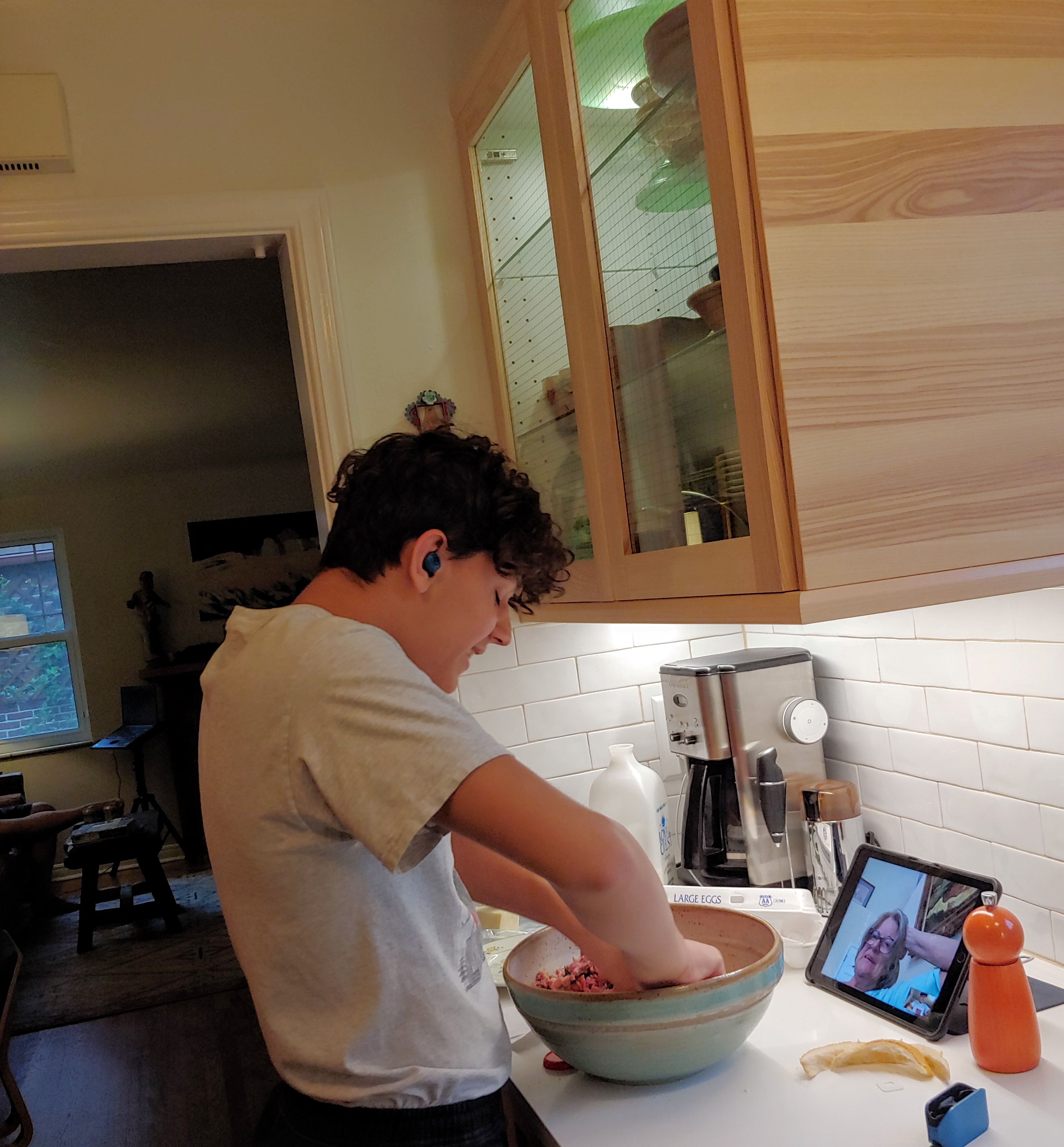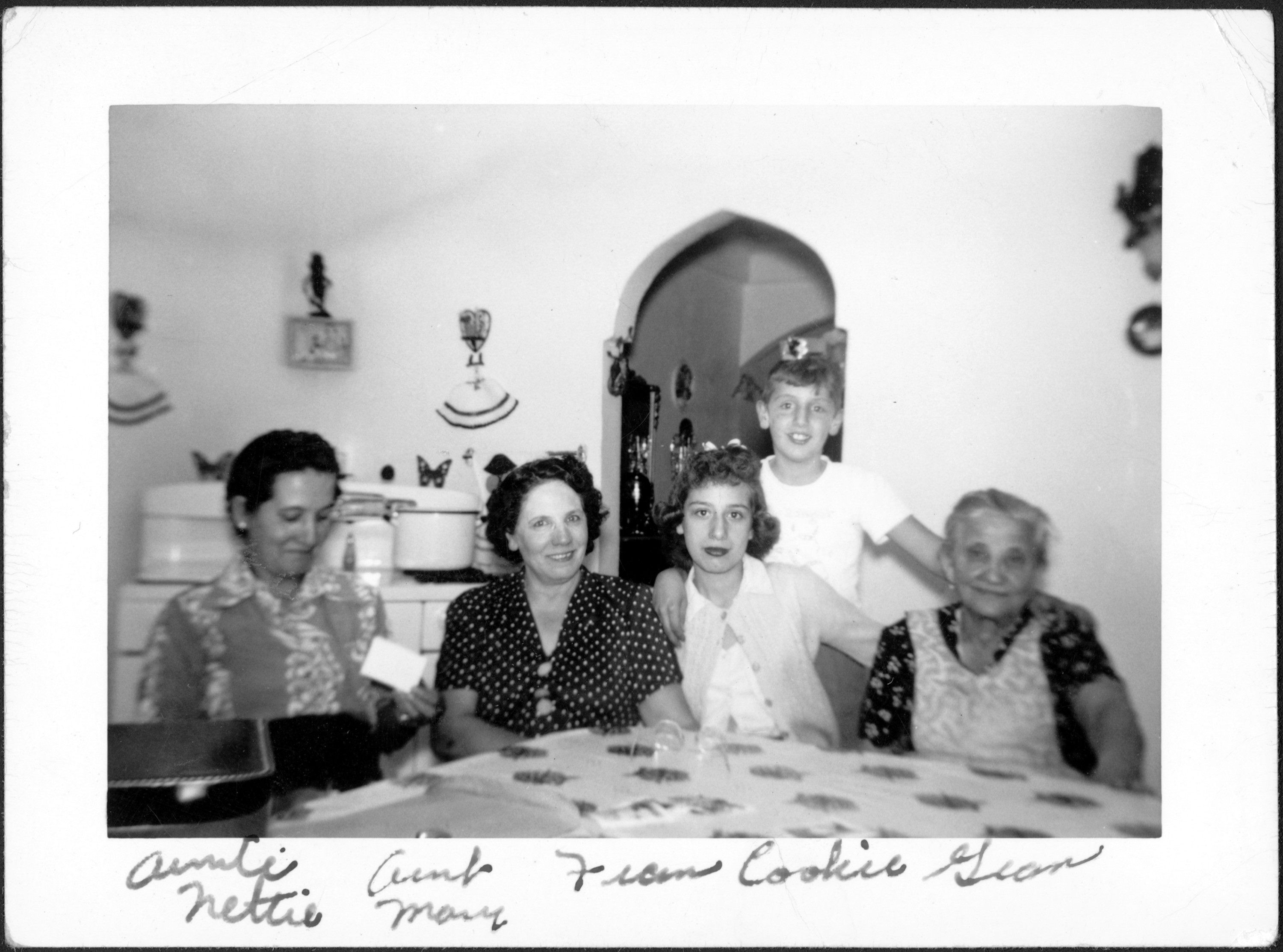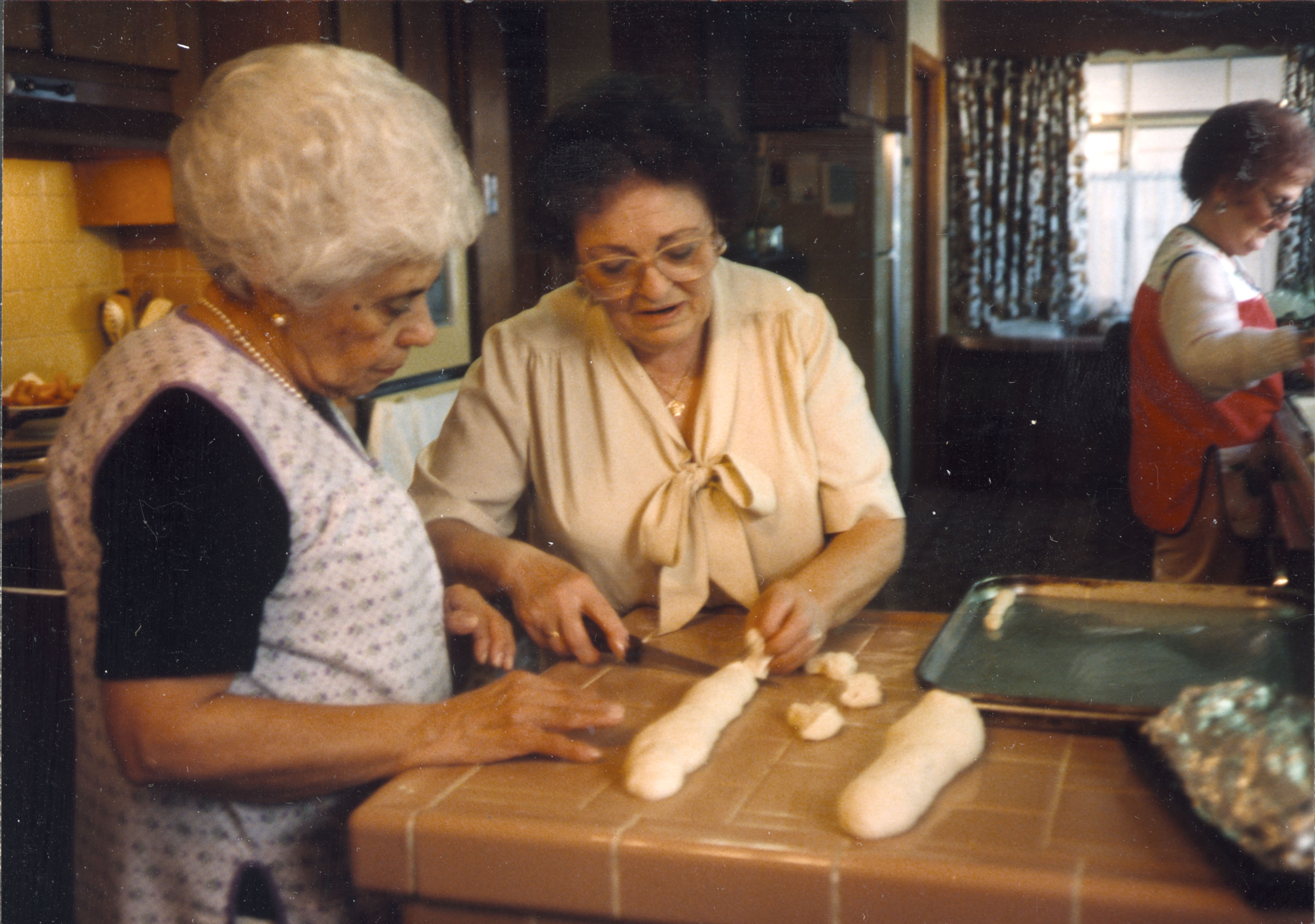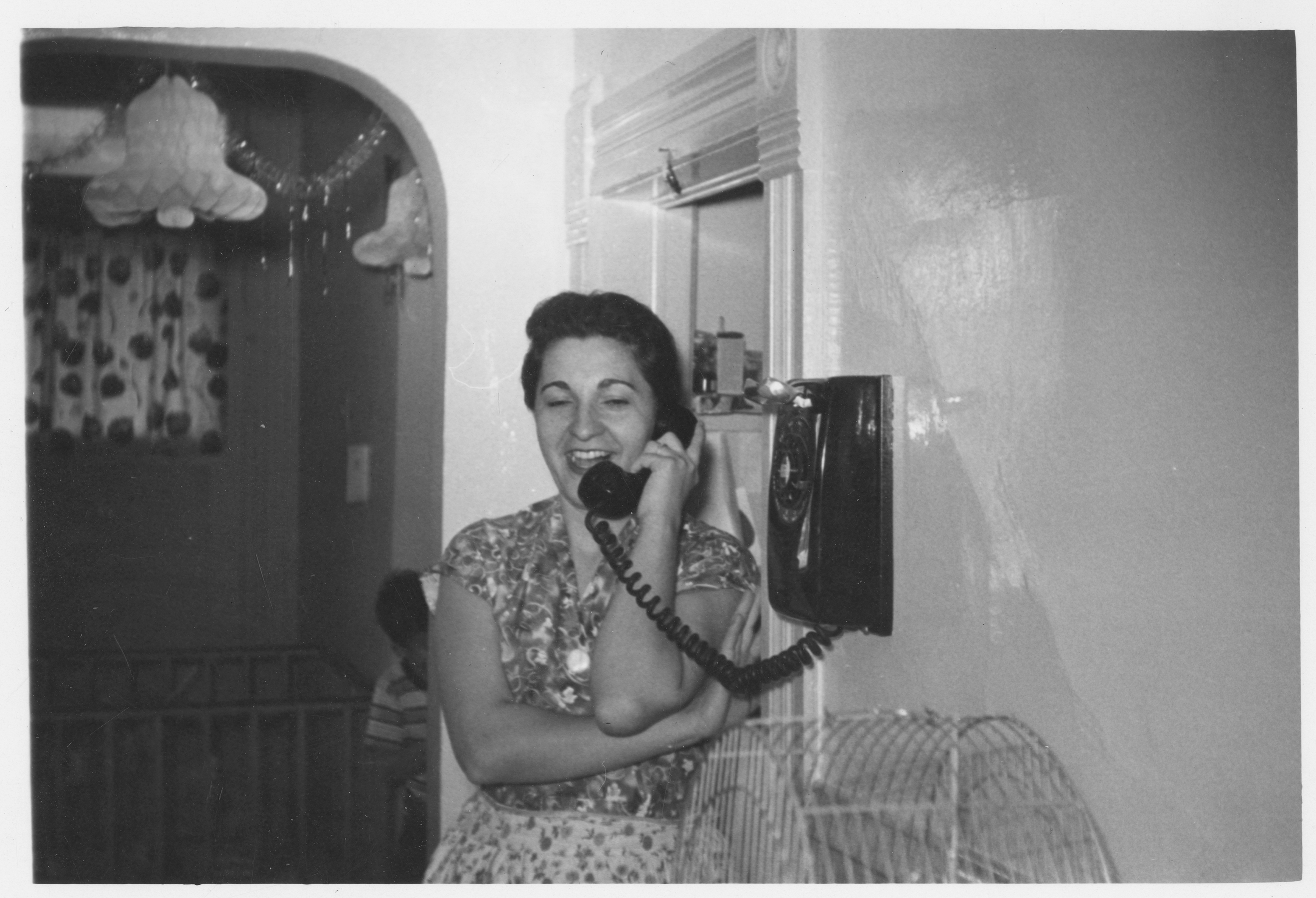
Story
Kitchen Table History, Even When We’re at Different Tables
While our holidays this year may be physically distant, we can still find ways—via phone or Zoom—to connect through reminiscing and stories. This actually feels even more important this year if you know elders who are isolating and alone.
I learned so much about life and history from storytelling at a kitchen table over a plate of cookies and coffee. There is power in, what I call, kitchen table history—informal oral traditions grounded in remembering and knowing where you come from. The holidays, with intermingled generations and traditional food eating and prep, are usually ripe for collective reminiscing and sharing. Think about the histories shared while aunties are together making tamales or potica, or the legends swapped over post-Thanksgiving dinner pies and coffee.

Sharing family recipes has taken on a new twist in the midst of this pandemic. Here, Mario Markuson DiPrince learns to make meatballs from his Nana via Google Hangouts.
Remembering is good for documenting history, but a number of studies demonstrate—what we likely already know—that reminiscing is good for your mental health too. I’ve worked many years helping people to write and record their personal and family stories, and I’ve witnessed benefits from both reveling in happy memories and unburdening unhappy ones.
Tell me a story
Connecting through remembering is simple. The trick is to start the conversation with an open and uncomplicated question, like the ones below, and then let the storyteller carry the story as she/he wishes. You can ask questions to keep the conversation going and give lots of visual or audible clues that encourage the storyteller, but it's important to not interrupt or pivot the discussion to your own experiences. Here are a few starters that you can use or customize to your situation:
- Tell me what it was like when you were little.
- Tell me about your first day of school, first Communion, first kiss, first job, or first car.
- Tell me about your name.
- When you were sick, how did your mother or grandmother take care of you? What remedies/remedios did they use?
- What was your favorite food when you were a kid?
- Tell me about an injury or broken bone.
- Where did you sleep as a child? Did you share a bed? Did you have a bedroom?
- Tell me about games or sports you played. (You can be specific if you know a specific sport they played.)
- Tell me about when your child was born.
- Was it hard for you when you first left the home you grew up in?
- How long have you been making [a food this person often makes]?
- Have you ever played an instrument?
- Look at your hands. Describe them. What can you tell me about them? (This is an especially good question for those with memory loss.)
- What chores did you have growing up?
- Tell me how to make a favorite food. (You could even organize a Zoom-facilitated cooking lesson.)
You can try to record these stories if you wish, but I recommend focusing first on the human connection and the time you are spending listening. It may seem obvious but being a good listener is really important; it is rewarding for both you and the storyteller.
Here are some other resources that I recommend:
- House of Memories is a dementia-awareness program in the UK with activity suggestions and even an app to help you; the activities are good for those with or without memory loss.
- Forgotten Southern Colorado is a wonderful Facebook group (you have to request being added) that is full of memories, recipes, and sharing about life in southern Colorado—often a stroll down memory lane.
- The Great Thanksgiving Listen, created by StoryCorps, has a variety of tools to help you record the oral histories your loved ones are sharing.
- Music from the past can act like a time machine, mentally transporting you to decades past. Spotify has music categorized by decades. Play songs from your loved ones' teenage years and ask them to share any memories. Music can work well for loved ones with significant memory loss.
When you ask someone to tell you a story, you let them know that they are loved and that their life matters. It is a demonstration of gratitude and respect.
In that spirit, History Colorado wants you to tell us a story. How was this Thanksgiving different for you and your family? What are you thankful for in 2020? Are you establishing new traditions this holiday season? Leave us a short message at 720-466-8215 and add your voice to our collective oral history of this season.
More from The Colorado Magazine
When Family Lore is Fueled by Latkes Hanukkah celebrates resiliency—something we’ve all been tapping into this year. It also means latkes. Love ’em, hate ’em, agree or disagree about what goes on ’em, the ritual and aroma and taste of these potato pancakes are part of what makes Hanukkah what it is. Emily Hope Dobkin, the founder of Betterish, shares a whole latke love.
Pie It Is! Diet experts and Marxists warn against imbuing things and food with abstract emotions and values. Yet, the alchemy of pie makes it hard to deny that these homespun pastries embody love, family, and human connection.
Vision and Visibility During this Native American Heritage Month, Kathryn Redhorse, director of the Colorado Commission on Indian Affairs, reflects on 2020 as a potential turning point in American Indian and Alaska Native communities’ long struggle for visibility, acknowledgment, and social justice.



